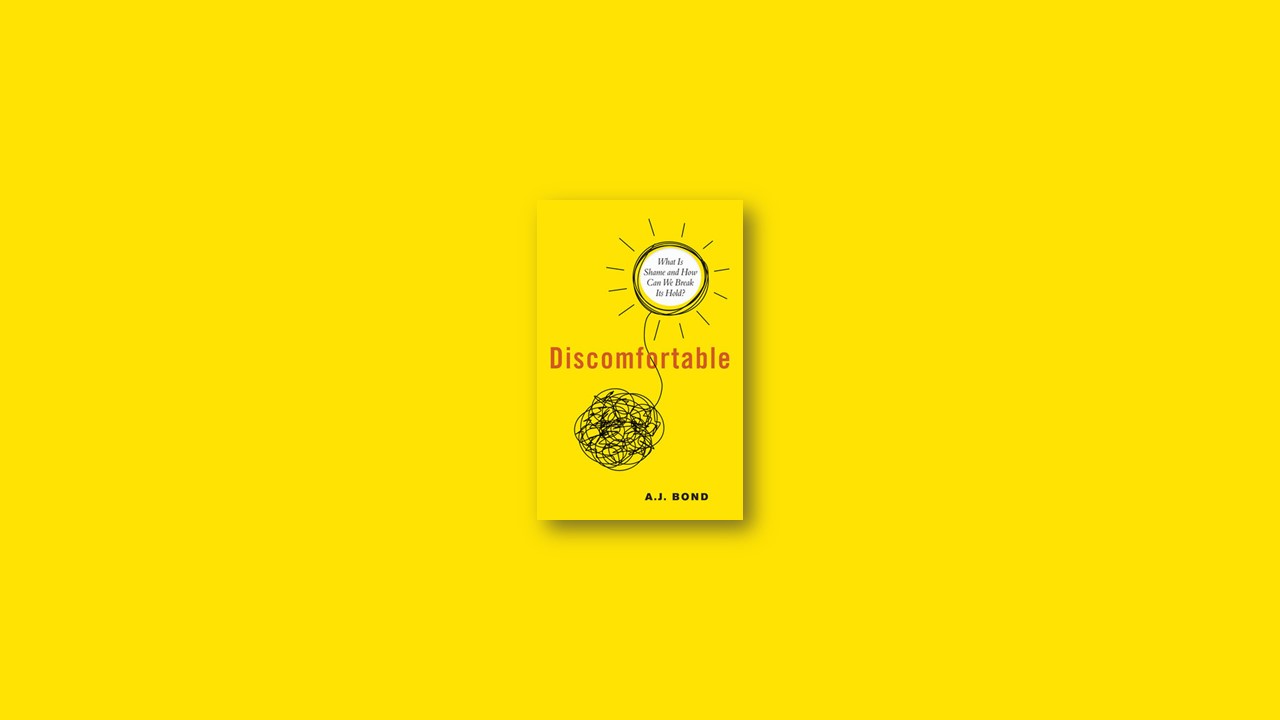How Does Shame Work?
Shame wants you to avoid feeling shame.
One way to think about shame is to compare it to another aversive feeling built into the human body: physical pain. What does physical pain want? Pain wants you to avoid feeling pain.
When you stub your toe, for example, pain is an unpleasant avoidance signal that says, “Don’t do that again!” Our body interprets the stubbing of a toe as hazardous to our physical health and ultimately our very survival. So it sends out pain as a punishment and warning that says, “You better fix this damage and avoid stubbing your toe in the future, not only to escape feeling more of this unpleasant sensation—pain—but to stay alive.” In this way, pain negatively reinforces our need for physical health by saying, “Don’t do anything that makes you feel me!”
Shame operates in much the same way. When you stub your toe … and then swear loudly in front of all ten of your innocent nieces and nephews at Christmas dinner, causing your entire extended family to scowl at you (hypothetically speaking), shame is the unpleasant avoidance signal that says, “Don’t do that again!” Our body interprets the breaking of social norms (i.e., swearing in front of children) and the perceived negative judgment of our in-group (i.e., scowls from our entire family) as hazardous to our in-group inclusion and ultimately our very survival.
Shame is both offensive and defensive. Not only does shame want us to avoid doing anything that will make us feel shame in the first place, it also wants to motivate us to act quickly to repair our image and improve our social standing afterward. Shame wants us to stop feeling shame as quickly as possible. This is achieved through different strategies that depend on our culture and upbringing but also connect directly to our instinctual threat response system. We may take responsibility and apologize for swearing in front of the children. We may take too much responsibility and grovel or people please. We may abdicate responsibility by blaming someone or something else (“Who put this couch here!?”). We may get angry and use intimidation and fear in an attempt to maintain social dominance. We may deny that we made a mistake at all. We may even swear again to countersignal that we aren’t worried about the judgments of others. Or we may just run away.
Getting Discomfortable
Trying to avoid feeling an emotion is not an effective strategy, it actually prolongs the emotion and stunts our ability to feel anything else. So the best practice is just to feel discomfort and unpleasantness. To really feel it, but not to believe it, act on it, or engage unconsciously in any of the patterned defensive reactions it triggers. Feeling emotions, including shame, is often the best way to move past them.
This is the basic practice of getting Discomfortable. You feel an emotion, accept it, and express it, but you don’t identify with it, believe its messages, or do what it tells you to do by default. You take the decision-making power away from your instincts, your limbic system, and your unconscious (while still appreciating, honoring, and accepting them as fundamental and intelligent sources of data). Instead, you give that decision-making power back to your conscious, logical prefrontal cortex. This is the space from which you can choose the most effective strategies for promoting well-being—connection, cooperation, counter-shaming, and compassion (or whatever your values are).
So the next time you notice that you are in shame, in anger, in sadness, or in your defenses or biases, see if you can find a way to embrace, feel, and express that reaction without actually acting on it.
Right now you might be protesting, “But why should I have to feel that shame at all?! Talking about sex isn’t bad! And I don’t give a fuck what some random person thinks about my shoes!”
The truth is that even if we consciously don’t give a fuck, our body almost always does.
This kind of thinking makes perfect sense though. And you are absolutely right. There’s nothing logical, per se, about either of those shame reactions. But our shame isn’t based in logic. The logic of shame is just that we are wired to care what other people think of us because it used to improve our survival to do so. That’s it. And when we were children and our parents told us sex was bad (or whatever they told us was bad), shame pressured us to believe them in order to ensure our survival. So we did. Simple as that.
That being said, a logical disagreement with shame is an important step in deconstructing it, as long as this logic is employed at a practical time. As a reminder, if your first reaction to feeling shame is to use your prefrontal cortex to combat it with logic, you are probably just resisting the unpleasantness of the emotion yet again. And resisting an emotion just prolongs it. So trying to out-logic shame is probably just going to make the shame worse. That’s why it’s so important to start with, “Of course!” After we say “Of course,” after we accept and feel the shame, there is a space where we can logically honor that sex isn’t actually bad and that my shoes are awesome! And by honoring this logic, we might even get less triggered … next time.
Healthy Shame
Once you’ve said, “Of course,” felt the shame, and allowed the intensity of the affect to die down, you can then challenge the cognitive component of shame (if need be). Your brain will likely already have a default interpretation of the event along the lines of your being different, bad, and alone. You can use internal curiosity to determine exactly what that interpretation is for you. Once the message is clear, remind yourself that it is just an opinion.
And it may not even be your opinion! Shame messages usually feel like objective truths, but they aren’t. That’s just your negativity bias blinding you to other interpretations, and your cynical psychic blinding you to other explanations. With this in mind, you have an opportunity to look back at the shaming event and map it onto a new interpretation. If you use your imagination, you can almost always reinterpret the event in a way that honors that you are not different, bad, and alone, that you are actually the same, you are normal, and you belong. This kind of reframing constitutes healthy shame.
Another useful tool for reinterpreting your shame is to unpack exactly what the triggering mechanism was. Look for the gap between what you expected or hoped to do and what actually transpired. That difference is the real cause of your shame. It will likely be fuelling an implicit comparison that says what you expected to achieve was better, and what actually happened is worse. But this hierarchical comparison isn’t necessarily true! Not only are the very concepts of better and worse subjective, but we have no way of knowing whether meeting that expectation would actually have improved our lives. All we know for sure is that we aren’t in pleasant affect right now, which means we are emotionally biased.
Another key to translating shame from toxic to healthy is to use the growth-mindset toolkit to counteract any fixed-mindset messages. When we subscribe to the fixed mindset, any mistake is damning and permanent, thus stimulating shame: Should Have Already Mastered Everything. This contributes to a belief in a possible fatal error, a hypothetical mistake that would be so bad that it would supposedly brand us as worthless and irredeemable forever.
Shame’s solution is to live small, to take no risks, and to stay silent. Converting these views into a growth mindset requires a constant reminder that we can always adapt, that we can always learn, and that making mistakes, no matter how disastrous they may be, is a necessary and even healthy part of that process.
Shame & Well-being
When it comes to well-being, getting Discomfortable is usually about feeling shame without acting on it. Weathering our outdated and overblown impulse for belonging in the moment in order to balance it with other important needs, like authenticity and autonomy.
Decide for yourself. Shame doesn’t understand your overall needs and circumstances as well as you do (or as well as you could, at the very least). Getting Discomfortable with shame returns the power of choice back to its rightful owner, the conscious you, the Decider.
In closing, getting Discomfortable encourages us to just feel and accept our innate reactions, leaving room for curiosity. Curiosity helps us to explore and understand those reactions, creating self-awareness. Self-awareness allows us to own and manage those reactions, fuelling authenticity. Authenticity encourages us to embody and express those reactions, building integrity. And integrity allows us to assimilate and balance all of our reactions in a way that stimulates the most well-being. And well-being is a reward unto itself.


